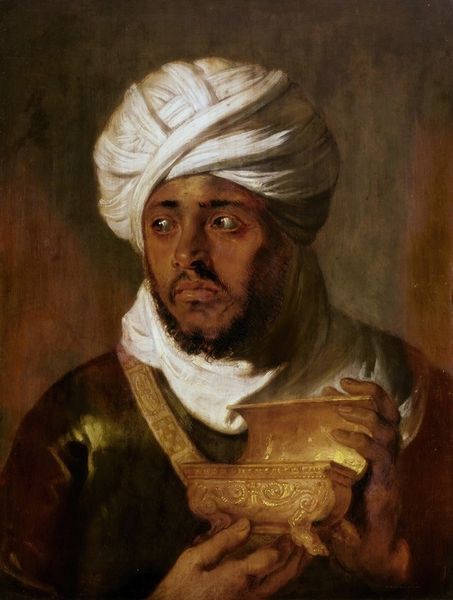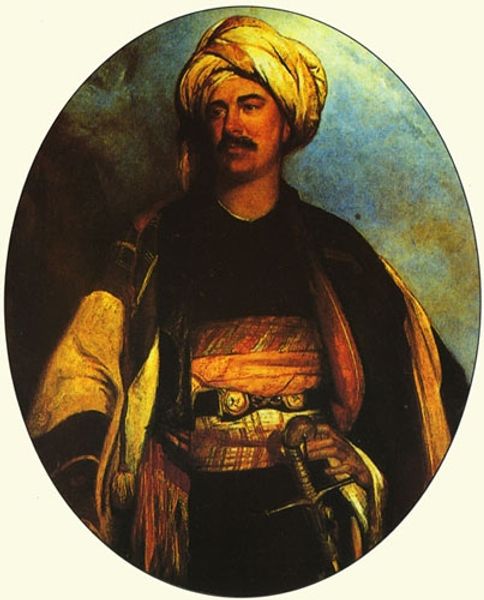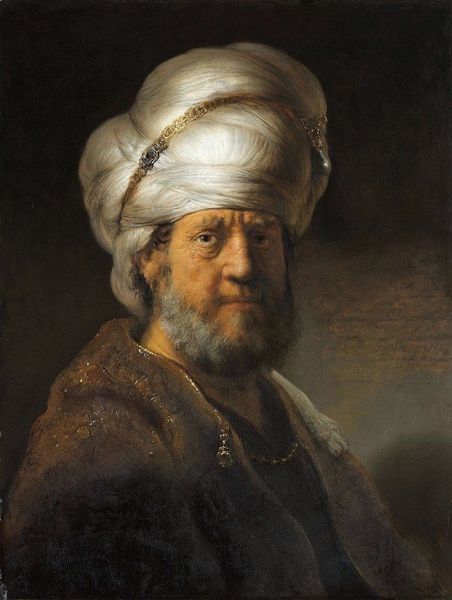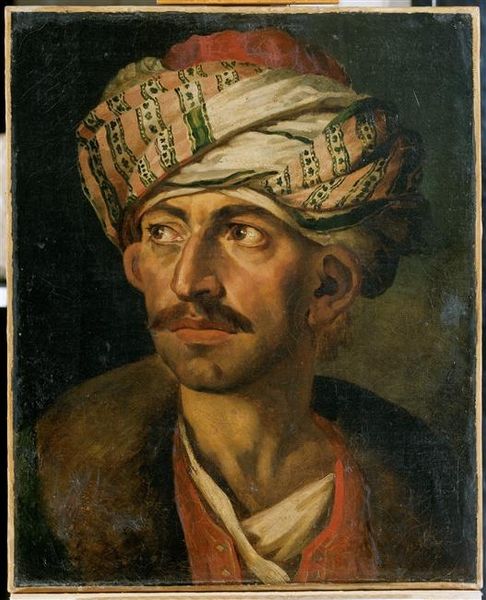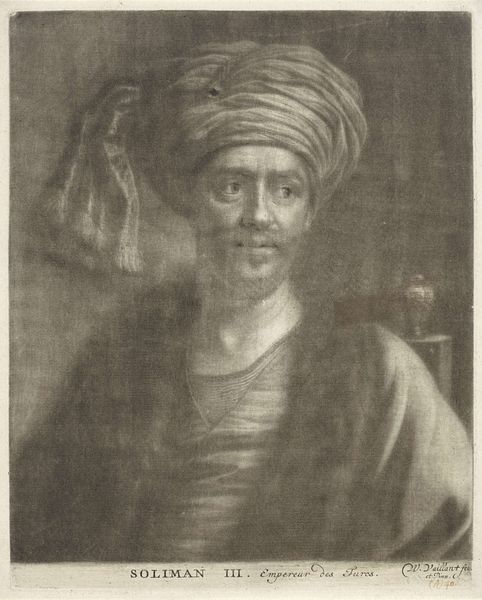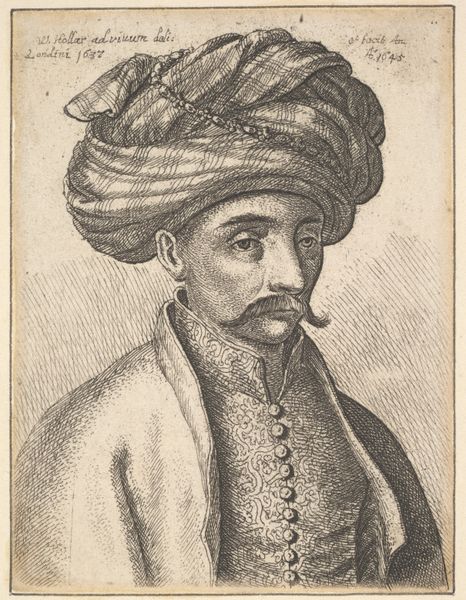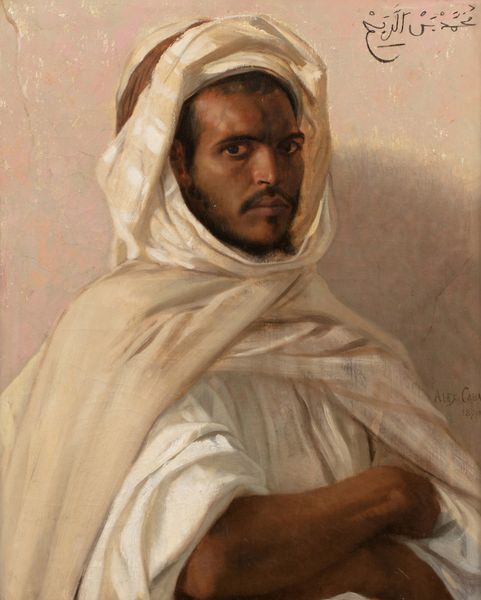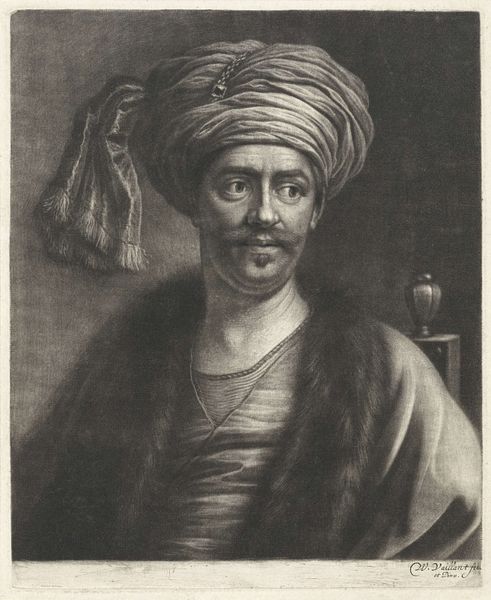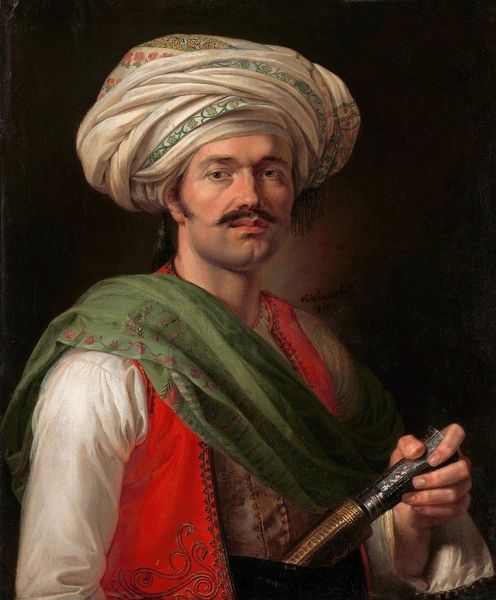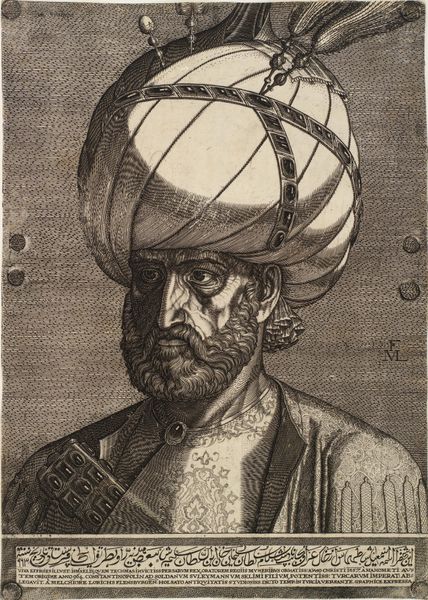
painting, oil-paint
#
portrait
#
baroque
#
portrait
#
painting
#
oil-paint
#
landscape
#
orientalism
#
history-painting
Dimensions: 100 x 72 cm
Copyright: Public domain
Editor: Here we have Peter Paul Rubens's "Mulay Ahmad," painted in 1609, using oil on canvas. The landscape background is unexpectedly hazy for a portrait. I wonder, what story is the artist trying to convey through these combined details? Curator: The symbols certainly tell a tale. Rubens captures Ahmad with distinct markers of status, yes, but it's about *more* than simple nobility. Note the sword, the elaborate turban – they point not just to power, but to a specific kind of cultural exchange happening at the time. Editor: How so? What do you mean by cultural exchange? Curator: The early 17th century saw a surge of European interest in, and sometimes fascination with, North Africa and the Middle East. This painting, with its slightly romanticized depiction of Ahmad against what looks like Roman ruins, reflects Europe's evolving relationship with what they understood as the "Orient." Rubens might be playing with stereotypes. What details seem exotic or unfamiliar to you? Editor: Well, the turban stands out. It seems intentionally detailed, as does the landscape in the background. But what's particularly interesting is the knowing gaze of the sitter. He meets your eye with an air of confidence that pushes back against simple Orientalist readings. Curator: Exactly! It challenges a one-dimensional interpretation. That gaze acknowledges the viewer, almost as if questioning our assumptions about who he is and where he comes from. What lasting impression does that communicative detail leave you with? Editor: I'm now reflecting upon this tension: the romanticized setting, versus the man’s assertive presence. It creates a richer, more complex view than I initially considered. Thank you! Curator: My pleasure. It reminds us to always question the symbols, and who controls their narrative.
Comments
No comments
Be the first to comment and join the conversation on the ultimate creative platform.

